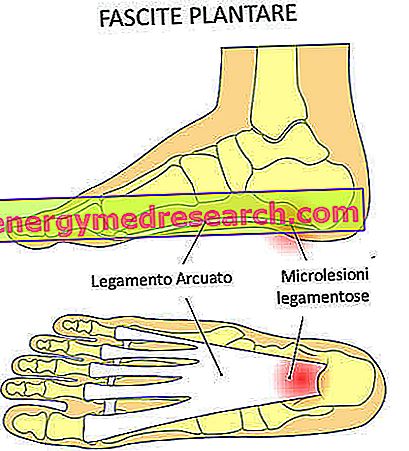Definition
Stroke outlines a serious neurological pathology in which the flow of blood in an area of the brain is denied or heavily reduced, thus depriving the brain tissue of oxygen and essential nutrients to fully guarantee its functionality: in a few minutes, the cells of the brain are induced to death.
Causes
Stroke is often the immediate expression of embolisms, cerebral haemorrhages or thrombosis: not surprisingly, stroke is closely related to the formation or detachment of thrombi (blood clots in the veins) or, worse still, to the rupture of a artery (hemorrhage).
- Risk factors: smoking, alcoholism, atherosclerosis, hypertension, male sex
Symptoms
The signs of stroke, with its true symptoms, can appear suddenly or slowly: in general, the stroke begins with a violent and abnormal headache, followed by aphasia, impaired vision, weakness, difficulty walking, swallow and understand, tingling, inability to move a limb, numbness, loss of balance, uncoordinated movement, fainting, dizziness.
- Complications: coma, death, total paralysis
Information on Strokes - Medications for the Care of the Ict are not intended to replace the direct relationship between health professional and patient. Always consult your doctor and / or specialist before taking Stroke - Care for Ictus Treatment.
drugs
Stroke is a medical emergency in all respects, therefore the request for medical aid is essential to save the patient's life or in any case to avoid the complications of the disease. It is essential to be able to recognize the symptoms: in fact, the sooner one realizes that the disease is waking up, the sooner it is possible to request a medical consultation.
Considering the risk factors, it is possible to prevent the disease by putting into practice some simple rules - such as quitting smoking, not drinking alcohol and following a balanced diet associated with constant exercise - and, when necessary, taking medications to control diseases such as hypertension and atherosclerosis which, as analyzed, could favor stroke.
Given the seriousness of the disease under examination, it is important to focus on the importance of controlling blood pressure: maintaining arterial pressure in the standard values is very important to escape stroke; not by chance, this rule is part of primary prevention. To avoid increases in blood pressure it is not sufficient to take antihypertensive drugs: it is essential, in fact, to follow a balanced diet, poor in salt and free from excess, to practice sports and, clearly, to avoid sedentariness.
If the drugs to prevent and treat stroke were not sufficient (analyzed in the next paragraph), it is possible to proceed with non-pharmacological therapies:
- Carotid Endarterectomy: consists of the removal of plaques, indicated to reduce the risk of ischemic stroke
- Ventriculostomy: a small tube is inserted inside the skull to drain the excess liquid, responsible for the swelling
- Angioplasty with stents
- Repair of damaged blood vessels (for hemorrhagic stroke)
- Isolation from the blood circulation of the damaged artery
- Embolization of the aneurysm
- Surgical removal of the clot
Thrombolytics : the drug is indicated for fragmenting the blood clot; doing so, the physiological blood flow is favored. Emergency therapy with thrombolytics must be started within 4-5 hours of the onset of stroke. It should be emphasized, however, that taking these drugs cannot increase the chances of survival but can avoid sudden complications.
- Alteplase (eg. Actilyse): the drug is a thrombolytic indicated to dissolve blood clots (responsible for obstructing the blood supply to the heart). It is recommended to take the drug as soon as possible after the stroke (within three hours). As an indication, take 0.9 mg of drug / kg (not to exceed 90 mg total) by slow intravenous infusion (duration of infusion: 1 hour), with 10% of the total dose taken as an initial intravenous bolus. It is recommended to take the drug in combination with acetylsalicylic acid and heparin within 24 hours of the onset of symptoms. Consult your doctor.
- Tissue plasminogen activator: a powerful thrombolytic indicated for the emergency treatment of ischemic stroke. It should be administered intravenously only when the stroke is diagnosed within 4-5 hours (before the start of therapy). Do not administer in case of hemorrhagic stroke.
Antiplatelet agents Platelet and Anticoagulants : the drugs belonging to this category are indicated to thin the blood, preventing the formation of clots.
- Acetylsalicylic acid (ES. Aspirin, Cardioaspirin, Aspirinetta): acetylsalicylic acid can be administered both for the prevention and treatment of stroke. The prescribed dosage for stroke prevention is, indicatively, of 75-325 mg, to be taken once a day, for life; for treatment, it is recommended to take a dose ranging from 50 to 325 mg once a day. Consult your doctor for more information. The drug can be formulated in tablets that also contain other active ingredients, such as aluminum hydroxide, calcium carbonate and magnesium hydroxide (eg Ascriptin): in this case, it is advisable to take ½ or one oral medication tablet, to start within and no later than 48 hours after the stroke episode. Continue with this dosage for 2-4 weeks. After this period of time, it is advisable to continue therapy with aspirin doses, in full compliance with what is indicated by the doctor.
- Warfarin (eg Coumadin): oral anticoagulant. Administration of warfarin is estimated to significantly reduce (by 60%) the risk of stroke in patients with atrial fibrillation. Powerful drug, of extraordinary efficacy, which must however be taken in full compliance with medical indications, considering the showy and serious side effects; for this reason, the habitual intake of warfarin is not recommended. The dosage must be established by the doctor, based on the patient's health and the severity of the condition.
- Heparin (eg. Heparin Cal Acv, Heparin Sod.Ath, Ateroclar, Trombolisin): although it is known that heparin can reduce the risk of clot formation, its use in the context of stroke is questionable: in fact, at the posology of 5000-12500UI subcutaneously, 2 times a day within 48 hours of the onset of symptoms, heparin appears to have no appreciable benefit. However, it appears that the use of the drug may somehow decrease the risk of early recurrence of ischemic stroke. Not recommended in case of previous history of hemorrhagic stroke. Heparin is quite useful for the prevention of deep vein thrombosis in patients with ischemic stroke.
- Clopidogrel (Plavix, Zyllt, Zylagren, Zopya, Iscover, Grepid, Clopidogrel Winthrop, Clopidogrel Acino): not used in emergency treatment for stroke treatment. Rather, the drug is indicated for the treatment of patients suffering from recent ischemic stroke. Therapy should be started within 7 days and 6 months following the stroke. Indicatively, the recommended dose is 75 mg, to be taken orally, fasted or with a full stomach. Generally, it is recommended to also take aspirin in combination with Clopidogrel. Consult your doctor for more information.
- Dipyridamole (eg Persantin): the drug is an antithrombotic also used in therapy to prevent stroke; more precisely, the drug is used for the secondary prevention of ischemic stroke, always at high doses, formulated in slow-release tablets (in this way, the therapeutic action of the drug is assured for 7-10 hours). As an indication, it is advisable to take a drug dose of 300-400 mg per day, possibly associated with Clopidogrel and / or acetylsalicylic acid. Consult your doctor for more information.
- Ticlopidine (eg Clox): the drug is a second-choice antithrombotic for stroke prevention, since not all patients benefit from the administration of this active ingredient. It should also be noted that the efficacy profile of the drug is not very favorable. However, the indicative dosage is to take 500 mg of active per day.
Beta-blockers, calcium antagonists, ACE inhibitors and diuretics : by decreasing blood pressure, these drugs (in particular beta blockers and calcium antagonists) can significantly reduce the risk of stroke, especially in patients under the age of 60. Furthermore, the drugs belonging to the diuretic category are indicated in the context of stroke to reduce brain swelling; in this way, the brain can receive oxygen-rich blood and nutrients with less difficulty.
Here are some examples of the most commonly used drugs for this purpose:
- Ramipril (eg. Triatec, Unipril, Eclipse): the drug belongs to the class of ACE inhibitors. Take two tablets (for a total of 2.5 mg) per day; subsequently, it is possible to increase the dose slowly (generally every 2 weeks) up to a maximum of 10 mg / day: the administration of this drug is indicated for the primary prevention of ischemic cerebral stroke in subjects who present a high risk of episodes thrombotic. The maintenance dosage plans to take 10 mg of the drug a day.
- Perindopril (eg. Coversum, Preterax): the drug is an ACE inhibitor indicated for the treatment of hypertension also for the prevention of stroke episodes. It is often used in combination with Indapamide (diuretic). The dosage must be established by the doctor.
For further information: see the article on drugs for the treatment of hypertension.
Statins : indicated for patients with high cholesterol who have a high risk of stroke. The drugs most used for this purpose are:
- Simvastatin (eg. Zocor): it is recommended to take the drug at a dose of 40 mg a day: this dosage is the most indicated for the prevention of cardiovascular diseases in general and of stroke in particular, in those patients suffering from hypercholesterolemia.
- Arorvastatin (eg. Xarator, Torvast): the drug is indicated to lower cholesterol levels in the blood, in order to prevent stroke, especially for those patients also suffering from hypertension. The indicative dosage is 10 mg a day.
For further information: see the article on drugs for the treatment of hypercholesterolemia
Sedatives: sedation is important not only to calm the patient but also to help reduce the pressure inside the brain. The choice of a sedative rather than another clearly depends on the severity of the condition and the general state of health of the patient.
The administration of other drugs depends on the pre-existing diseases in the period in which the stroke occurs: to report some examples, patients with diabetes will have to continue taking insulin or oral hypoglycemic agents, while patients suffering from high cholesterol will not have to forget to take the specific drugs to lower blood LDL levels.
The recognition and treatment of secondary diseases (diabetes, hypercholesterolemia, hypertension, obesity, etc.) is essential to reduce the risk of stroke: once again the winning weapon to escape stroke is prevention.



